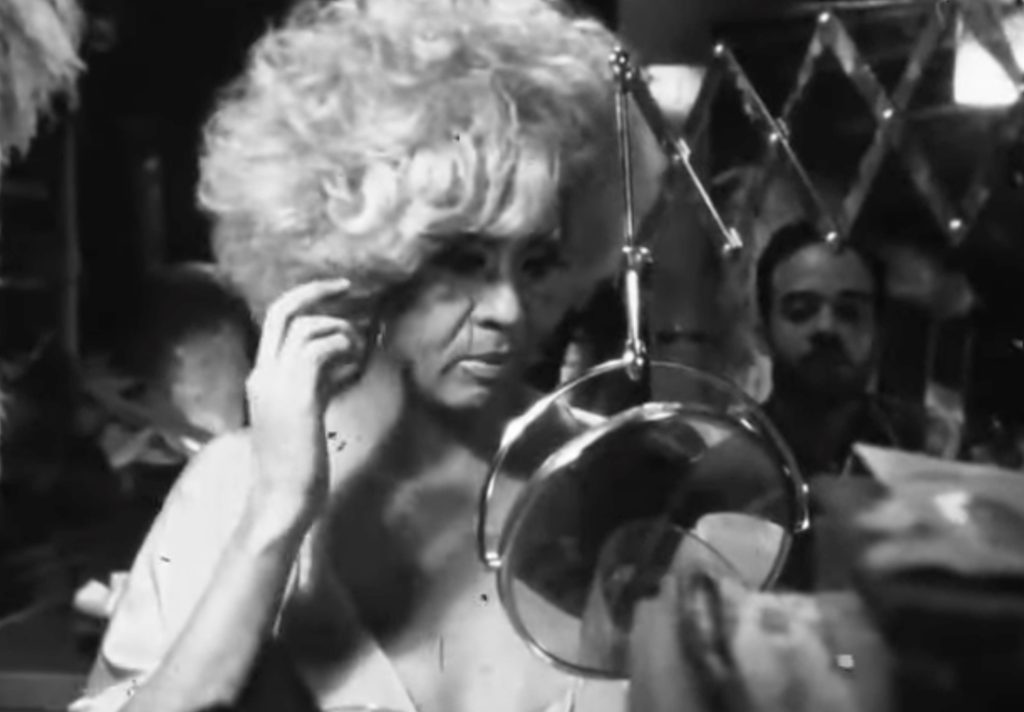Decorating your body is a very personal choice. When deciding how to show yourself to the world, you have to decide to stay true to yourself or pretend to be someone else. This dilemma inspired Dorian Corey, a Black transgender drag performer and fashion designer who transformed women's clothing.
Blackness, queerness, and womanhood have a great ability to succeed in difficult situations, and that's also true in the fashion industry. The first known fashion designer was a white straight man, but other well-known names like Pierre Balmain, Hubert de Givenchy, and Cristóbal Balenciaga continued his legacy.
There are exceptions to this trend, like Ann Lowe (the first prominent Black fashion designer), Edith Head (a notable female costume designer), and Christian Dior (an iconic gay women's designer). However, there is a concern about the role of queer women designers, especially Black queer women designers, in the women's fashion world.
Honoring the body
Dorian Corey, who was born in Buffalo, New York, experienced the glamor and exaggeration of personality at an early age. In the 1950s, as a teenager, she worked with mannequins at Hengerer's department store and developed a love for design and construction.
She eventually moved to New York City to study at Parsons School of Design. Not much is known about her time there, but based on the dramatic and lively costumes she wore during her cabaret and drag career, it's likely she drew inspiration from high fashion but rejected the sterile clothing created from a male perspective.
Charles Frederick Worth, considered the first modern women's wear designer, focused on dressing bodies with princess lines and long walking dresses. Considering the 19th century context, it makes sense that men took a body-focused approach to the first attempts at couture for women. The influence of men in shaping the feminine body heavily impacted early fashion designs. While supposedly straight women didn't openly oppose these styles, the unique expression of queer women was clear. Despite embracing femininity, Corey celebrated the body instead of trying to mold it into society's desires.
But it took another 30 years for Corey's influence to be felt. When she finally gained recognition, it became evident that having more women in the fashion industry made it much more diverse in terms of expressing oneself through clothing.
Corey's impact extended beyond the fashion world to the entire LGBTQ+ community. She was featured in the famous documentary Paris is Burning as a leading figure in the New York drag ball scene. She acted as the mother of the House of Corey, providing support to LGBTQ+ youth in need. She is also known for her significant influence on the development of voguing.
Feathers, beads, & sequins everywhere
Understanding the historical context is crucial to understanding why Corey was such a significant figure in fashion, for women, and for queer people. Even though Coco Chanel was not queer, she did bring a daring androgynous approach to her fashion, possibly inspired by the historical figure Lady Una Vincenzo, who was a lesbian.
Vincenzo created custom suits inspired by her former lover, Marguerite Radclyffe Hall, blending Hall's masculinity with her own feminine style. Though there is no direct evidence, it is no coincidence that Chanel adopted the tailored trousers and suits of her male partners and refined them into her own look, marking the beginning of emphasizing the unspoken queerness of women's fashion.
Black designers did not gain prominence until the 1970s and 1980s, with Corey playing a leading role in the movement.
As previously stated, Corey had been involved in fashion long before, but her influence was not widely recognized until the end of the century.
She was known for her vibrant and dynamic use of feathers, beads, and sequins. Being a drag queen is characterized by an intense femininity. The contrast between Corey’s designs and Vincenzo’s suits demonstrates the varied expressions of queer women’s fashion.
The most significant impact of fashion created by queer women is the complete storytelling and fantasy aspects incorporated into the clothing. Corey presented her work through a marvelous interpretation of womanhood. An iconic moment of this expression was Corey’s creation of a 30-by-40-foot feathered cape, which she dropped to reveal a sparkly bodysuit, and then used to envelop the audience in a tent. It was as if she were inviting everyone into her luxurious secrets.
However, having one iconic figure does not eliminate the challenges faced by queer women in the fashion industry. Even with Corey, there is very little information about her own clothing label, Corey Design, and its influence. Consistently pushed into the background by men, including those in the queer community who often dominate the women’s wear industry and rarely make space for their sisters, women continue to struggle for the opportunity to dictate how to adorn their bodies.
Will we always be grasping at straws as only a few pave the way to self-expression freedom?
The hidden secret she kept in her closet
Corey passed away from AIDS-related complications in 1993 at the age of 56. However, her profile skyrocketed posthumously when a shocking discovery was made following her death.
When cleaning out her apartment, friends found a partially mummified body in her home.
It was determined that the body belonged to convicted rapist Robert Worley, who had been deceased from a gunshot wound to the head for at least 15 years. The true story behind the corpse will never be known, but many suspect that Corey killed him in self-defense after he broke into her home.
According to the theory proposed by Atlas Obscura, she concealed the body knowing that a Black queer woman would never receive sympathy from the police. Others believe the two had a turbulent love affair and that Corey killed him in a crime of passion.
An episode of the popular show Pose, called Butterfly/Cocoon, as well as the play Dorian’s Closet by Richard Mailman,
are based on this crime. told Mailman, who describes Corey as “witty, realistic, and unflappable…[with] a self-possessed cadence and world-weary observations,
Indeed, Corey was known for her clever remarks, and for a particularly memorable quote from Paris is Burning: “Everybody wants to leave a lasting impact, some influence on the world. Then you believe you’ve left an impact on the world if you just get through it, and a few people recall your name. Then you’ve made an impact.”
No matter what occurred, Corey certainly left her mark.









